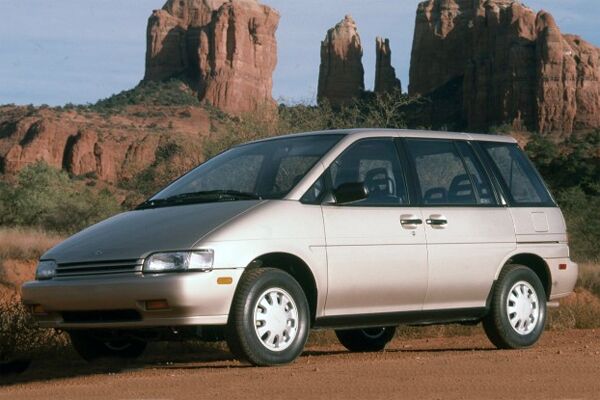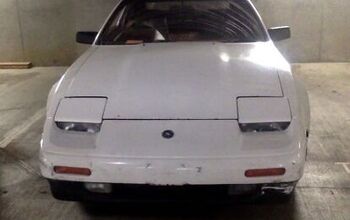Rare Rides: The Versatile 1993 Nissan Axxess Sport Wagon, and It's a Manual

Today’s Rare Ride is the more streamlined successor to the dorky Stanza Wagon, or Multi if you’re Canadian. I mentioned Axxess as a Rare Ride back in 2017 with the Stanza article, and today’s the day we present it properly.
Come along for some versatile Sport Wagon goodness.
The first Stanza Wagon/Prairie wrapped up its production in 1988, and the Axxess filled the void immediately in markets except for North America. There, the Axxess did not arrive until 1990. With its new model, Nissan changed the platform it used. The Stanza Wagon was based on the Sunny, but its lack of B-pillar and short wheelbase caused some safety concerns. To remedy this, the Axxess was based on the larger Bluebird, which you’d know as the Stanza. As a result, the Axxess had a wheelbase of 102.8 inches and an overall length of 171.9 inches. The Stanza Wagon used a 99-inch wheelbase and had an overall length of 170.3 inches in two-wheel drive guise.
Axxess used engines of inline-four arrangement in either 2.0- or 2.4-liters displacement. Transmissions were four-speed automatic or a five-speed manual, and once again four-wheel drive was available in certain markets. All markets outside of North America saw the Axxess branded as Prairie.
Axxess was on sale for exactly one year in the US – 1990. It proved unpopular as sub-mini vans and MPVs so often did domestically, and was axed immediately. Nissan USA made do with the fire-prone, slow-selling Van until the 1993 introduction of the Quest, a minivan much more suited to the tastes of U.S. customers. However, the MPV-loving Canadians bought their Axxesses (Axxii?) in much greater numbers, and it remained on sale there through 1995.
Interesting trivia aside from the naming scheme difference in North America: American market cars had automatic seatbelts, Canadian ones used manual. And while the Prairie offered the 2.0 or 2.4 in Canada, all examples for US customers had the 2.4. All-wheel drive was optional in both markets.
Elsewhere, the Prairie continued on through 1998 in its second generation. Replaced in North America by the aforementioned Quest and in Europe by the smaller Serena van, Japanese customers still received a third-gen Prairie. Called the Liberty, it shared its platform with the new Avenir wagon, a car that looked a lot like contemporary the Subaru Legacy. Liberty remained in production through 2004 and sported many of the same features as Prairie I and II. It changed names (but not formats) again when it became the Lafesta and was built on a Renault Megane platform. Prairie ended its heritage after a 2011 to 2017 run (a second Lafesta) as a rebadged Mazda 5.
Today’s Rare Ride is a front-drive Sport Wagon trim of the Axxess, with a five-speed manual transmission. Available in Ontario in pretty good condition, it asks $4,495 CAD.
[Images: Nissan]

Interested in lots of cars and their various historical contexts. Started writing articles for TTAC in late 2016, when my first posts were QOTDs. From there I started a few new series like Rare Rides, Buy/Drive/Burn, Abandoned History, and most recently Rare Rides Icons. Operating from a home base in Cincinnati, Ohio, a relative auto journalist dead zone. Many of my articles are prompted by something I'll see on social media that sparks my interest and causes me to research. Finding articles and information from the early days of the internet and beyond that covers the little details lost to time: trim packages, color and wheel choices, interior fabrics. Beyond those, I'm fascinated by automotive industry experiments, both failures and successes. Lately I've taken an interest in AI, and generating "what if" type images for car models long dead. Reincarnating a modern Toyota Paseo, Lincoln Mark IX, or Isuzu Trooper through a text prompt is fun. Fun to post them on Twitter too, and watch people overreact. To that end, the social media I use most is Twitter, @CoreyLewis86. I also contribute pieces for Forbes Wheels and Forbes Home.
More by Corey Lewis
Latest Car Reviews
Read moreLatest Product Reviews
Read moreRecent Comments
- CanadaCraig My 2006 300C SRT8 weighs 4,100 lbs. The all-new 2024 Dodge Charge EV weighs 5,800 lbs. Would it not be fair to assume that in an accident the vehicles these new Chargers hit will suffer more damage? And perhaps kill more people?
- Akila Hello Everyone, I found your blog very informative. If you want to know more about [url=
- Michael Gallagher I agree to a certain extent but I go back to the car SUV transition. People began to buy SUVs because they were supposedly safer because of their larger size when pitted against a regular car. As more SUVs crowded the road that safety advantage began to dwindle as it became more likely to hit an equally sized SUV. Now there is no safety advantage at all.
- Probert The new EV9 is even bigger - a true monument of a personal transportation device. Not my thing, but credit where credit is due - impressive. The interior is bigger than my house and much nicer with 2 rows of lounge seats and 3rd for the plebes. 0-60 in 4.5 seconds, around 300miles of range, and an e-mpg of 80 (90 for the 2wd). What a world.
- Ajla "Like showroom" is a lame description but he seems negotiable on the price and at least from what the two pictures show I've dealt with worse. But, I'm not interested in something with the Devil's configuration.






































Comments
Join the conversation
Lol...what a $#!+box
I have a 1993 axxess; has ac, sun roof, auto and 2.4 engine. Fun car to drive.